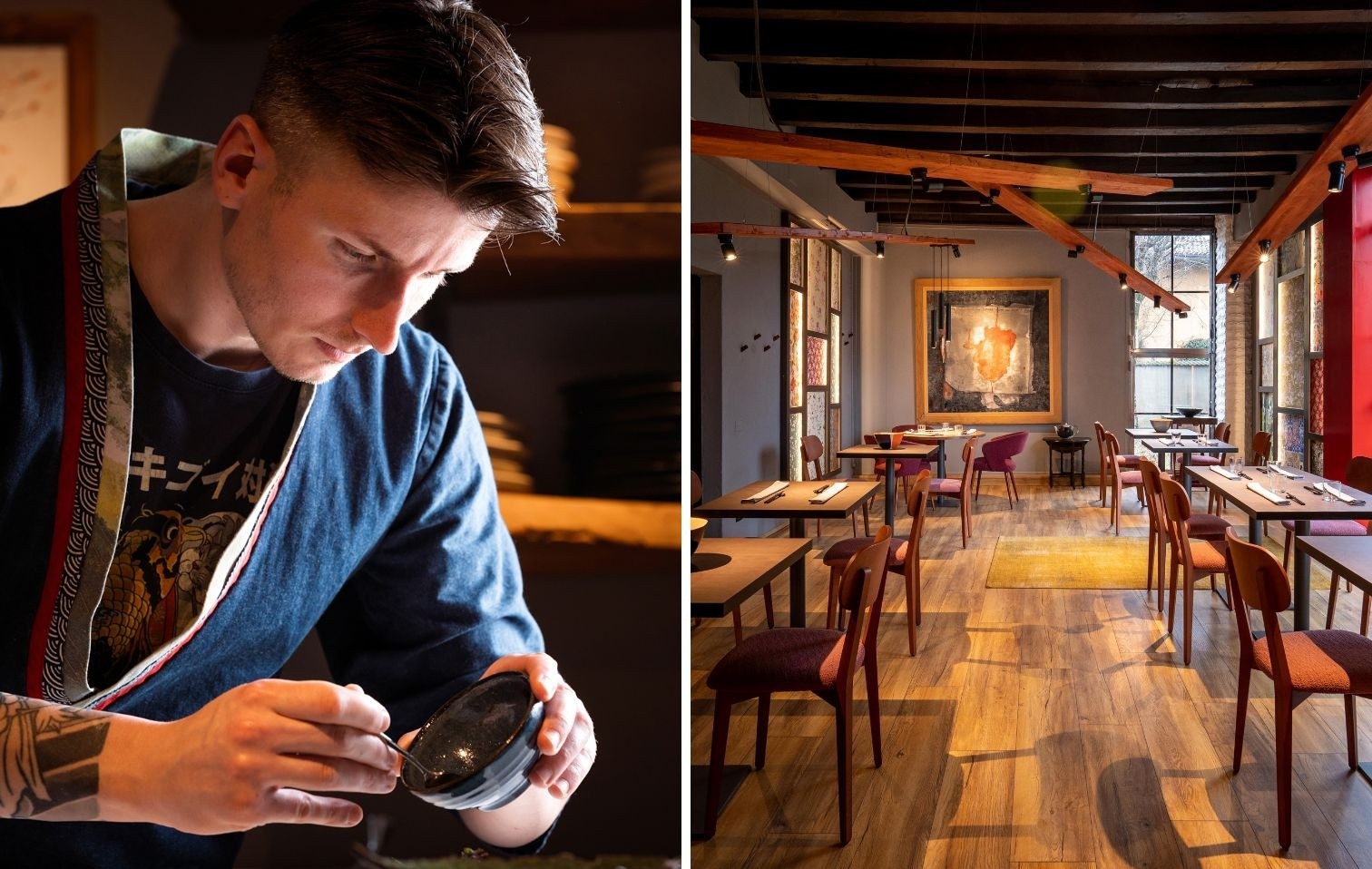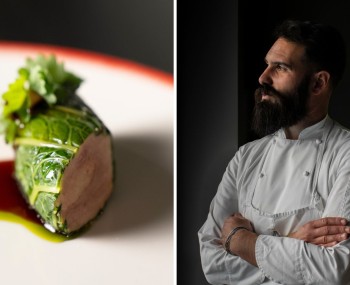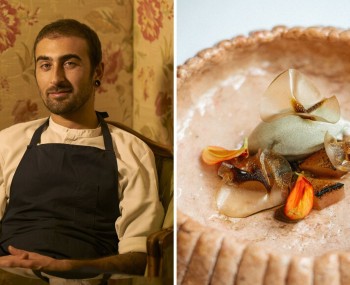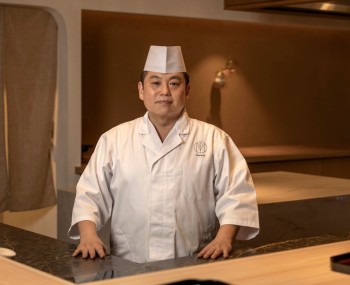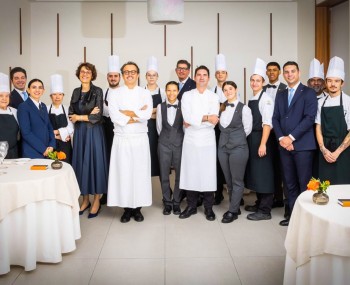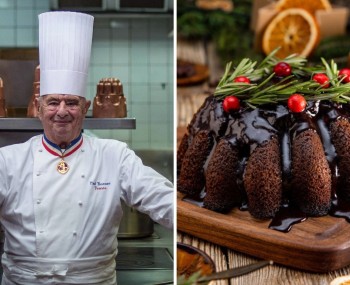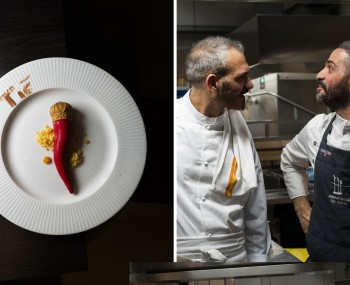A former trattoria transformed into a Ryokan where you can savor the most authentic Japan: Siseroshi brings the Land of the Rising Sun to the Brescia countryside.
The restaurant and its story
Exiting the Manerbio exit and driving a few kilometers west, you'll come across a charming farmhouse in the Brescia countryside. You might expect to stop for a delicious platter of salami or a traditional local dish paired with a good glass of red wine. However, when you arrive at Siseroshi, you'll be in for a surprise.
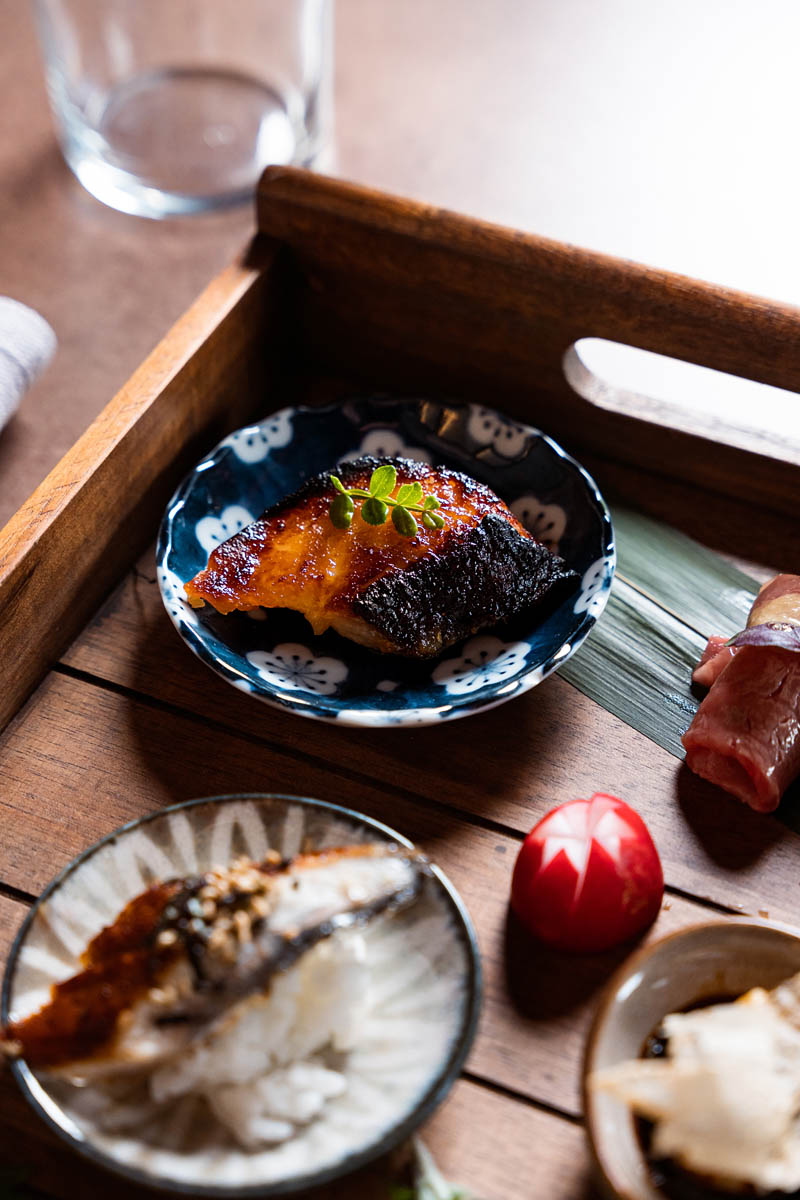
Luca Imberti, a restaurateur with three decades of experience, chose this former trattoria in 2021 to showcase the most authentic Japanese cuisine, still unexplored in Italy. Luca has always had an innate passion for ethnic cuisine. After the success of Cicero, his Mexican cuisine restaurant in Soncino, he decided to fly to Japan from Mexico, bringing the essence of the Land of the Rising Sun to Siseroshi.

The pivotal moment was Luca's encounter with Vitaly Dovbenko during the pandemic. Luca thought of adding sushi options to Cicero's takeout menu. Vitaly, born in 1992 in Ukraine but raised in Italy, developed a fascination for Japanese cuisine during his studies at the Sraffa Hotel Institute in Crema. This fascination led him to Japan, where he immersed himself in the millennia-old culinary traditions of the country, working alongside Japanese chefs like Hitoschi Toshisa and Naoyuki Kuwana.
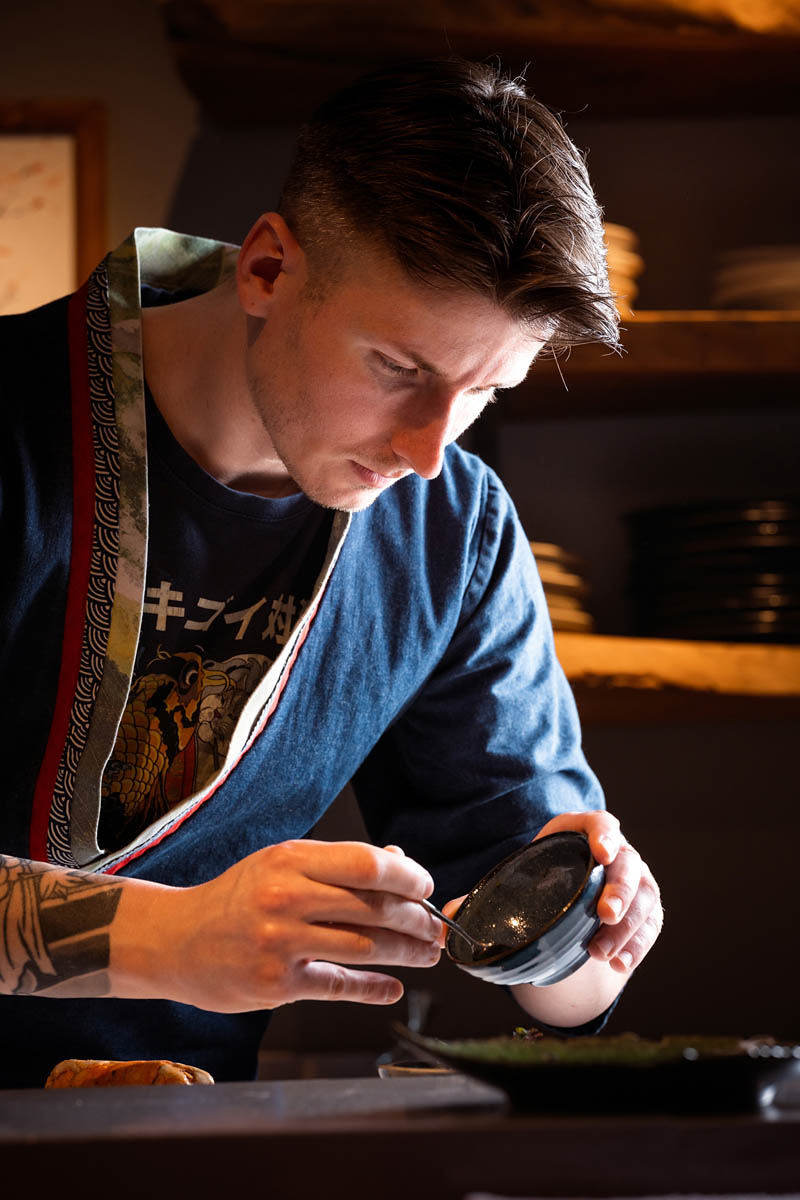
The meeting with Vitaly made Luca realize how often Japanese gastronomic culture in Italy is misrepresented and watered down to not scare away diners. Many are the errors and misconceptions that most "so-called Japanese" restaurants carry with them: in the Pacific Island nation, there are no all-you-can-eat options, each establishment has its unique stamp, and uramaki is not a product of the local culture, just to name a few. This is where Luca's desire was born to open an inn in his homeland that serves the most authentic Japanese cuisine.
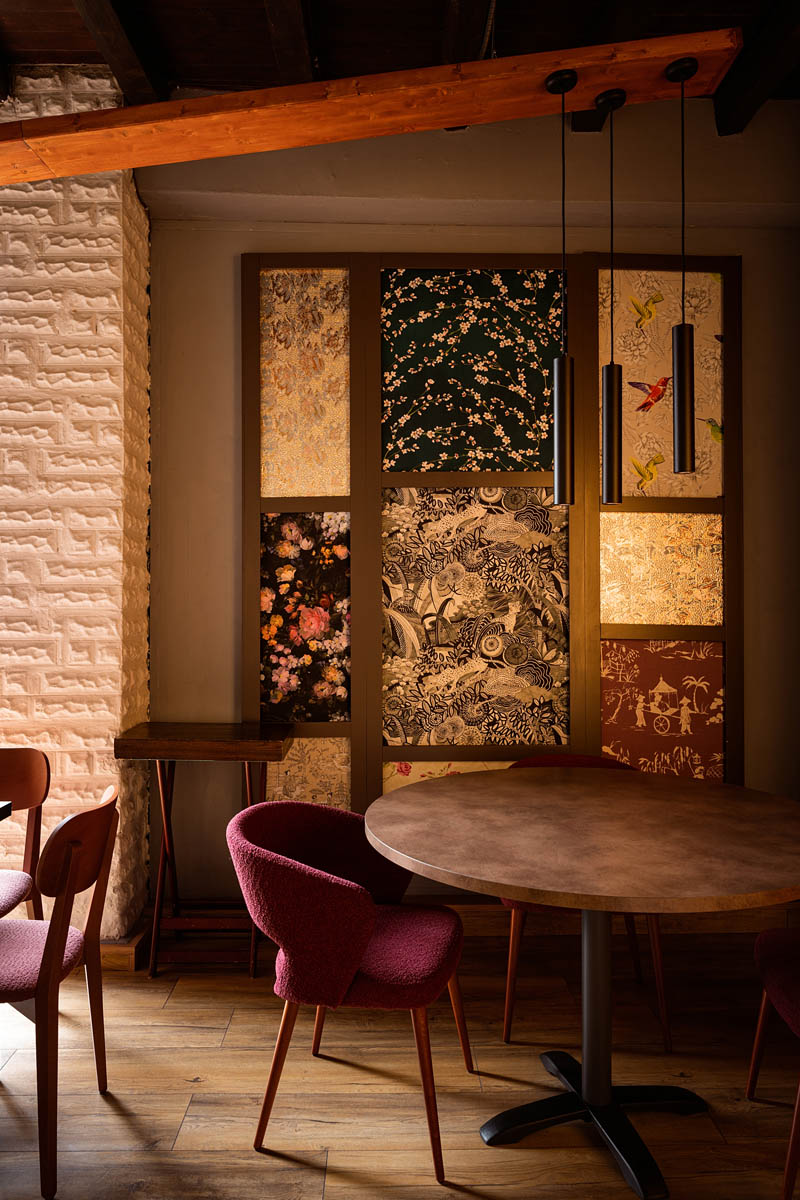
"I am convinced that Japanese cuisine is not just about sushi or tempura. It's a wonderful world of ingredient combinations, special raw materials, seasonal products, precise techniques, and recipes that require long cooking, marinating, and various complex techniques. Traditional Japanese cuisine is history, culture, aesthetics, and taste. Furthermore, for a very long time, it has been locked in a golden box. Now I want to open this treasure, which is filled with rituals and rigor, preserving it from the confusion in a jungle of misleading and distorted messages," Luca explains.
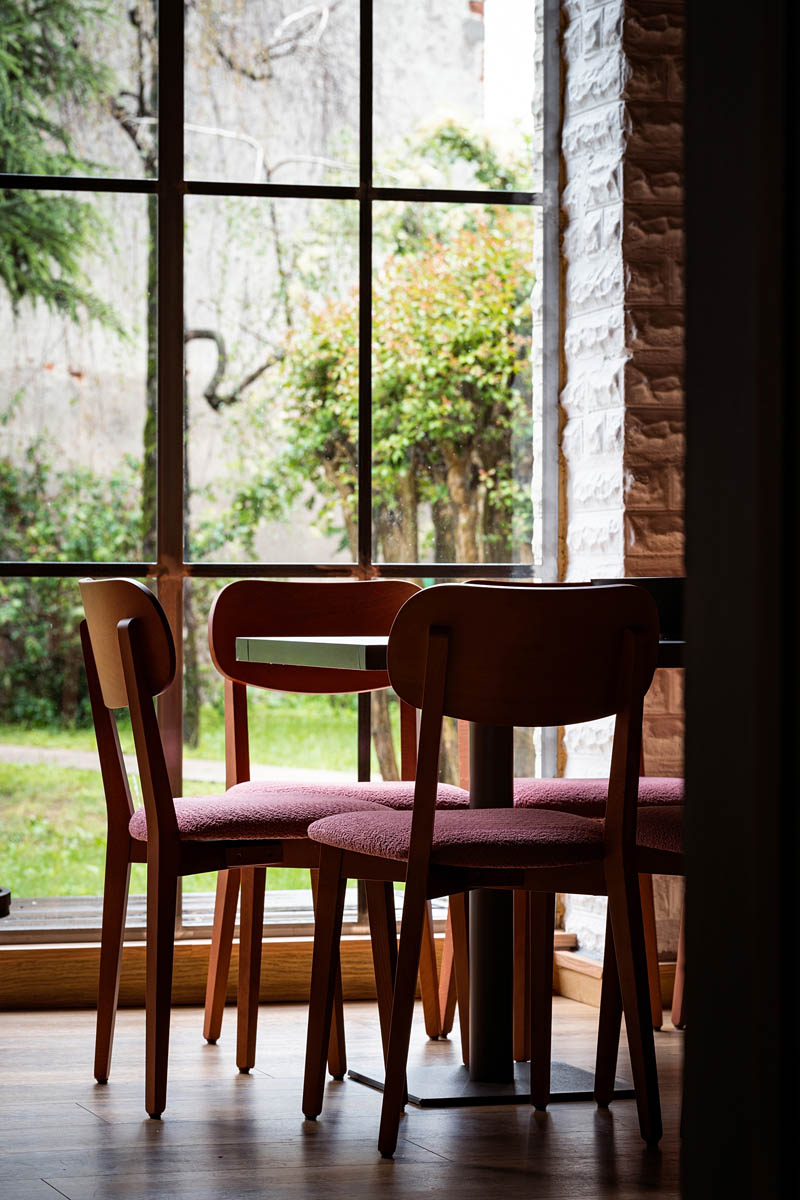
The mission is truly challenging and brave. It's a challenge that Luca and Vitaly approach with enthusiasm and determination, with the aim of making people understand that food in Japan is a custodian and synonym for history and seasonality, infused with a strong aesthetic component. "Moritsuke" is the term that refers to the Japanese art of plating, which pays meticulous attention to space, form, and color. In line with this concept, Luca has recreated the atmosphere of the "ryokan," the typical Japanese inns, with painstaking care, aiming to make every detail express the concept of hospitality and courtesy.
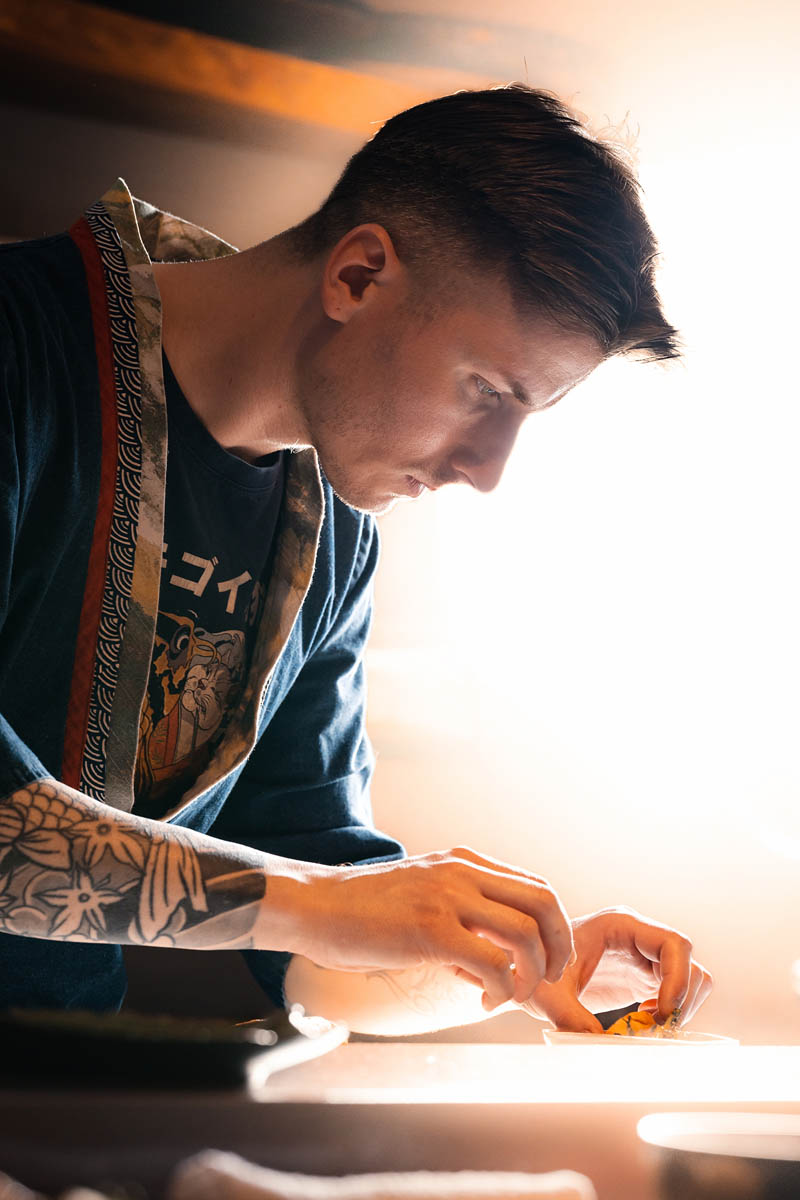
The environment is elegant and warm, with soft colors alternating with the vibrant red of the Japanese flag, and porcelain and other details unmistakably evoke Japanese culture. At Siseroshi, you breathe in the deepest Japan - rich in history and rigor. Vitaly, behind the omakase counter, with his elegant, precise, and meticulous movements, is the perfect actor on the stage of the Land of the Rising Sun, now in the province of Brescia.
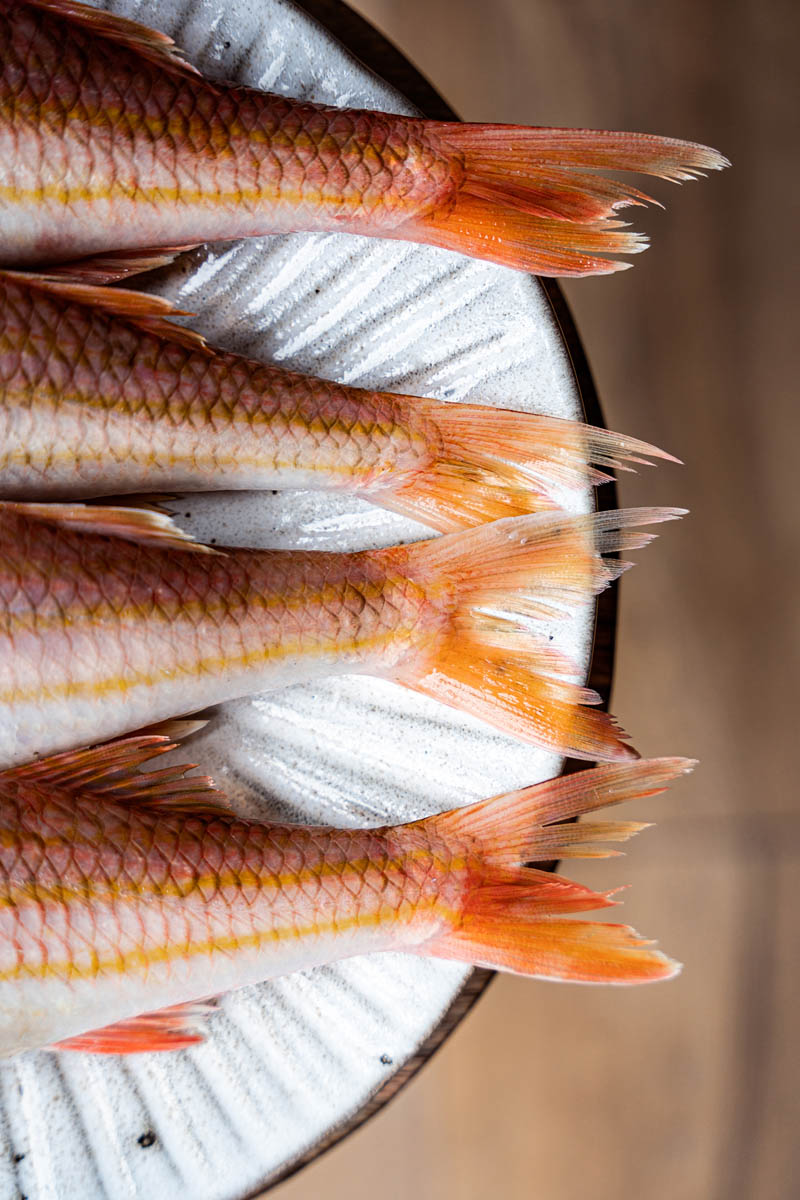
The dishes
White, black, and red lanterns and a character on the solid wooden door serve as a prelude for those arriving at Siseroshi. Inside, the striking scarlet counter on the left immediately catches the eye, where eight diners each evening opt for the Omakase experience. On the other hand, the large winter garden windows host the tables for the KAISEKI experience, where you "stop, share, and savor traditional Japanese cuisine dishes together. A journey suggested by cooking techniques, ingredients, and the chefs' experience," explains owner Luca Imberti.

Whatever your choice, those who come to Siseroshi won't be disappointed; they'll be enchanted by the exceptional quality of the ingredients and the extreme attention to seasonality. However, for the first visit, it is recommended to opt for Omakase. In Omakase, the counter turns into a "dreamlike place where you surrender to the chef's precise pampering to taste dishes elaborated vis-à-vis with the best seafood ingredients. An experience that engages all the senses, an explosion of sensations," Imberti continues.
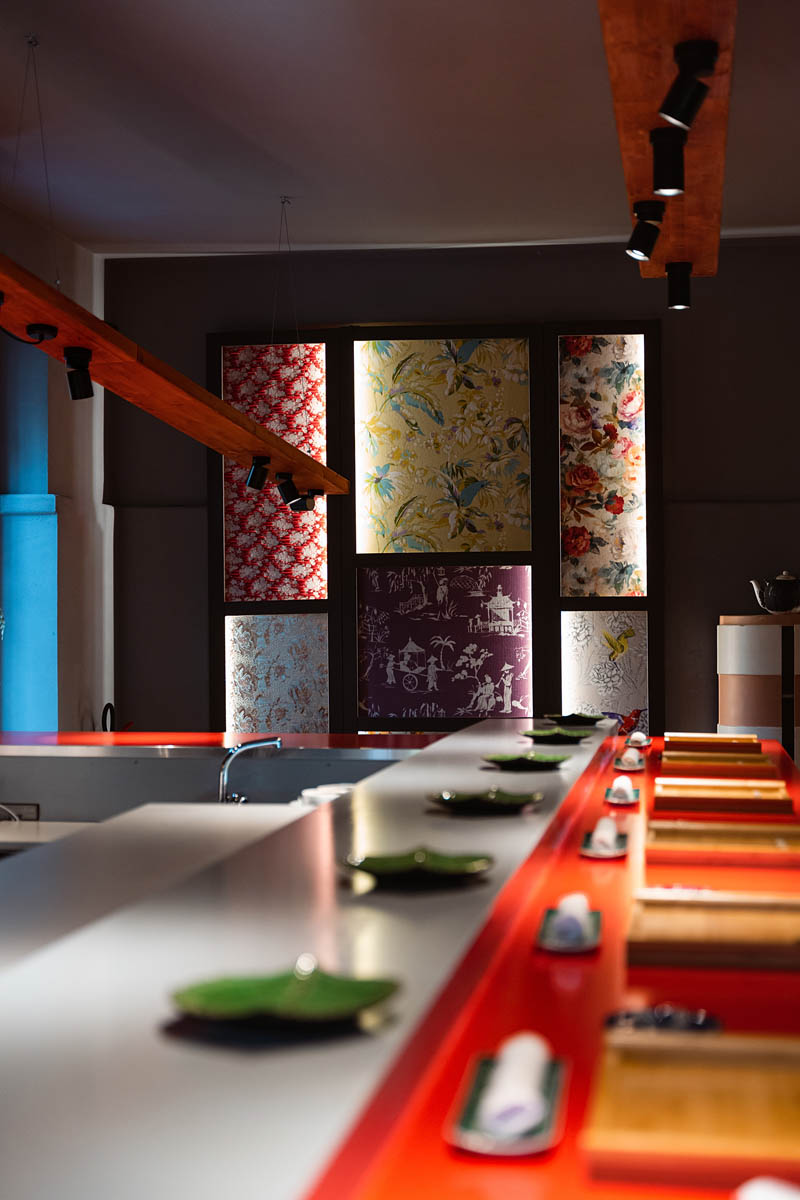
"In Japanese, 'Omakase' means 'I trust you'; so those who sit at Siseroshi's counter entrust themselves to Vitaly's skillful hands and expert technique for a fifteen-course journey where the keywords are balance, precision, rigor, harmony, taste, technique, and tradition. The Usuzukuri Saba, a mackerel carpaccio marinated in rice vinegar, seared with charcoal in front of the diners, yuzu sauce (a very intense and flavorful Japanese citrus), currants marinated in mirin (a sweet sake) resting on shiso leaves, is the first step into the world of Japanese cuisine.
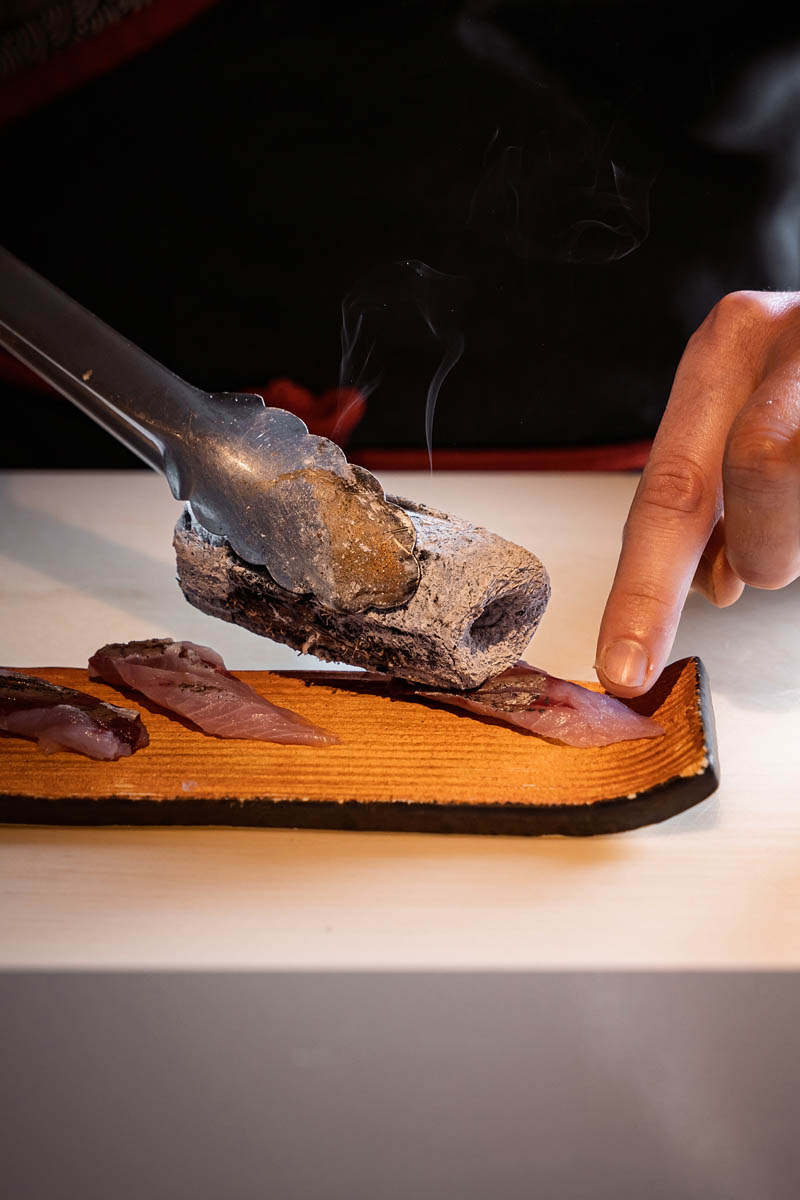
To surprise the palate, the meatiness of the mackerel and its masterful cut stand out, making the flesh even more succulent, anticipating the explosion of savor and smokiness, balanced by the acidity of currants marinated in mirin. The shiso leaves, known as Japanese basil - a mix of mint, anise, cloves, and basil - with their alternating herbal, citrusy, and sweet flavors prepare for the next course: Kani no tempura. In this taste of Japan, soft-shell crab is fried in a rice flour tempura; at the bottom, there is a datterino sauce and sakura eni - small, very flavorful Japanese shrimps - sesame oil, and pepper sprout. The crunchiness of the tempura encases the sweetness of the crab meat; each bite marks the alternation of textures, flavors, and consistencies of an extremely tasty and refined dish.
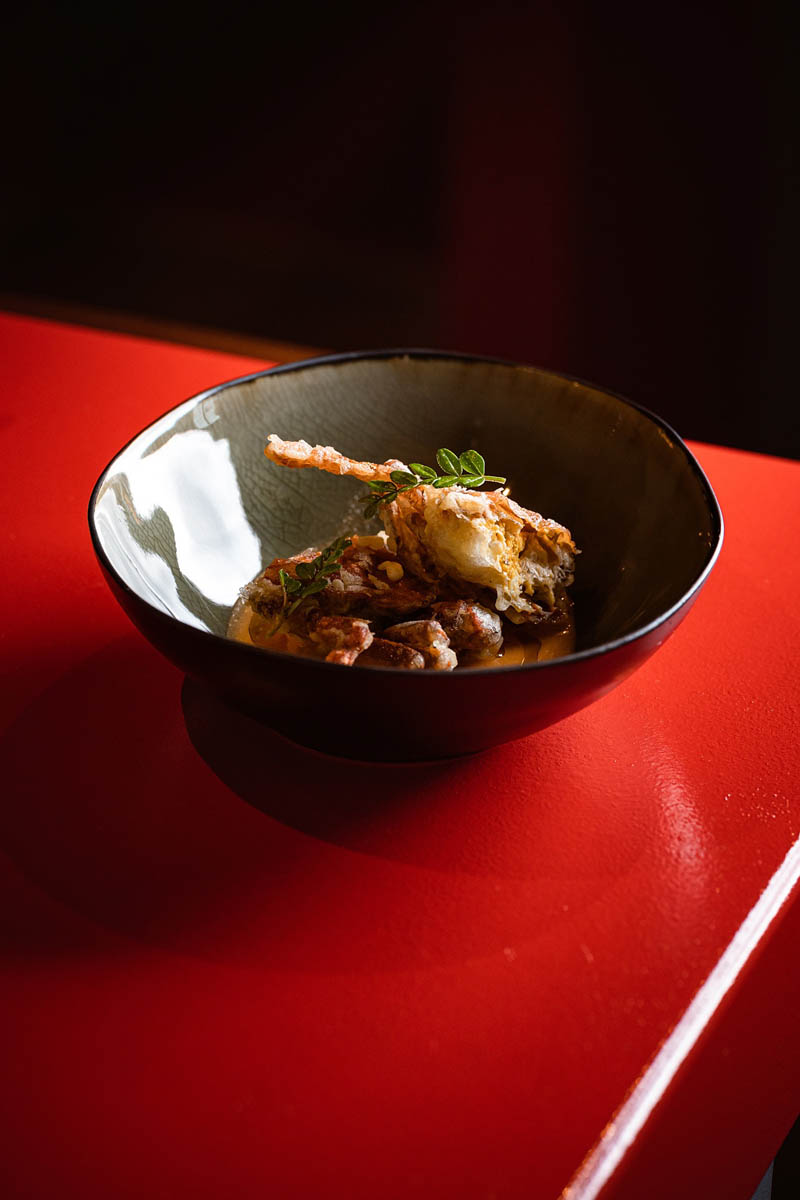
The journey to discover the fifth taste, Umami - a term coined in 1908 by Dr. Ikeda, a Japanese chemist who first discovered it in kombu seaweed broth - continues with the Sashimi of purple centrophorus. While waiting to savor the white meat of the centrophorus, one is captivated by Vitaly's skill in handling the Yanagiba, the knife used in sushi preparation. In Japan, the tradition of knives dates back to when samurais used them as weapons of war. Since then, their production has become a symbol of Japanese craftsmanship. The cut is a focal point of Japanese cuisine, and watching Vitaly fillet the freshest fish underscores the intensity and importance of even the smallest details.
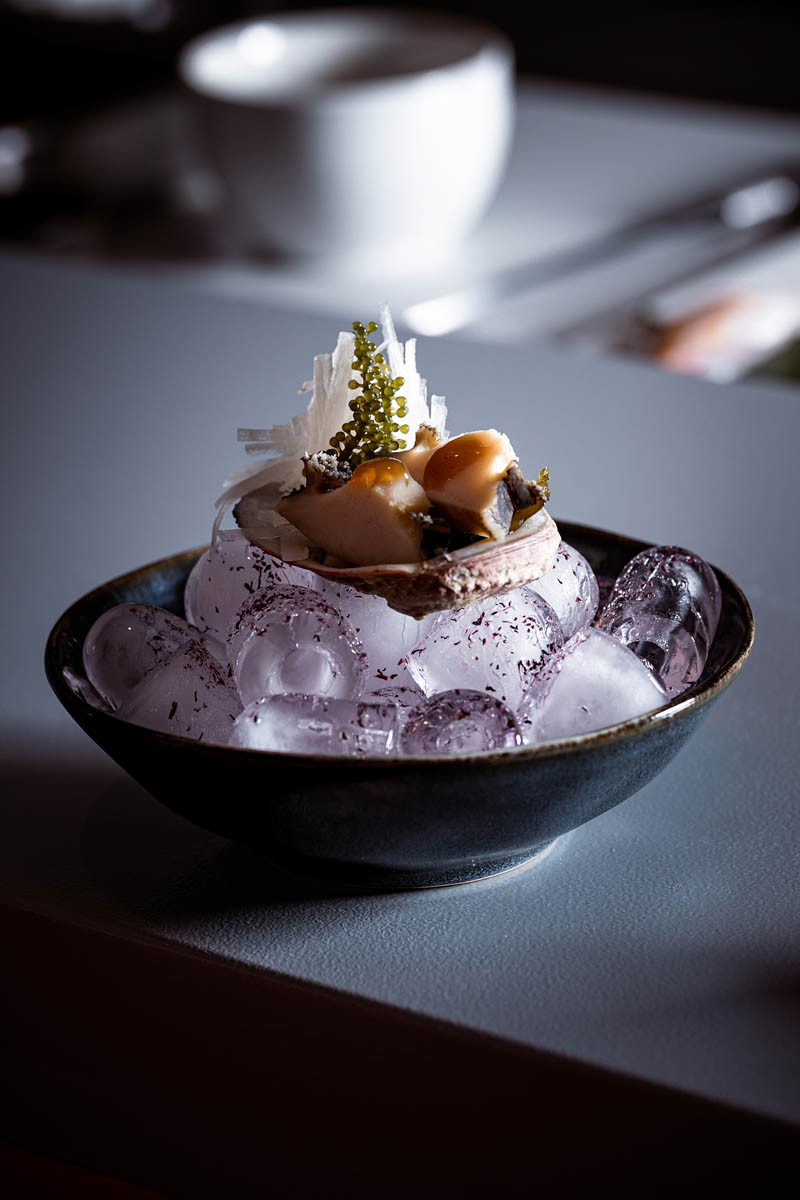
In this course, the chef presents the purple centrophorus - a fish that inhabits depths between 400 and 800 meters - in two versions: the well-known sashimi and another where the meat is carved and seared, dressed with a drop of extra virgin olive oil and sansho pepper (a Japanese pepper with a citrusy aftertaste). Red shiso appears here again, with the red variety being more flavorful and intense than the green one. It is accompanied by seaweed, red and green lettuce, and fresh wasabi. The common thread remains the meat's richness and intensity. The next course is truly surprising, the Ankimo: monkfish liver. This is a refined dish, one of the "chinmi," or rare and unusual delicacies. The liver is steamed with sake; at the base, there's ponzu sauce with added yuzu, mizuna sprouts, Japanese mustard, and miso sauce. It's a luxurious, rich, and opulent dish, but at the same time, it possesses disarming elegance.
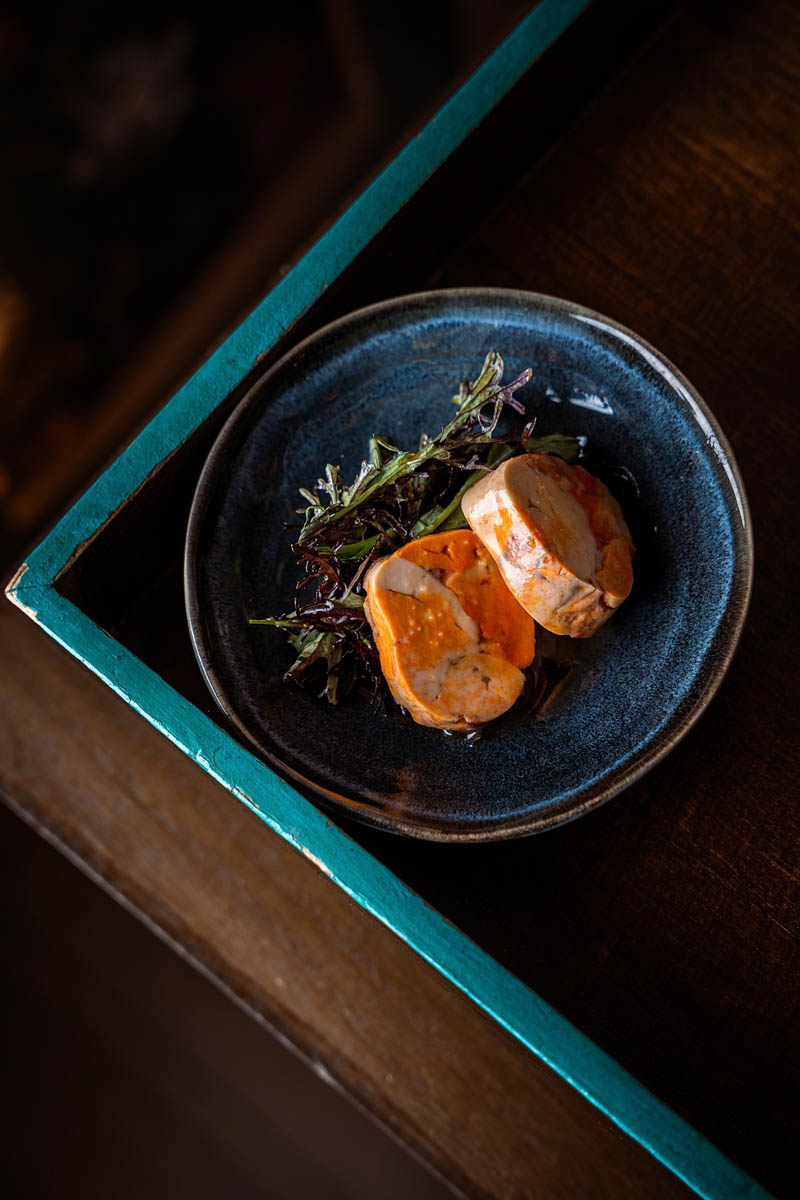
The typical tea bowl in which the Chawanmushi is served delves even further into Japanese culinary tradition. Vitaly presents the Japanese savory egg custard with shiitake mushrooms and sweet shrimp. It's a dish with a texture as comforting as velvet, with each spoonful revealing the intense flavor of shiitake or the sweetness of the shrimp. While savoring the Chawanmushi, Vitaly begins preparing the seven nigiri that continue the umami dance. "Nigiri" means "two fingers," indicating how to enjoy these "rice and fish bites": they should be picked up with two fingers and eaten in one bite, strictly upside down to let the fish make contact with the taste buds. In the leaf-shaped plate, the chef places fresh ginger marinated in rice vinegar, creating a thoughtful break between each nigiri.
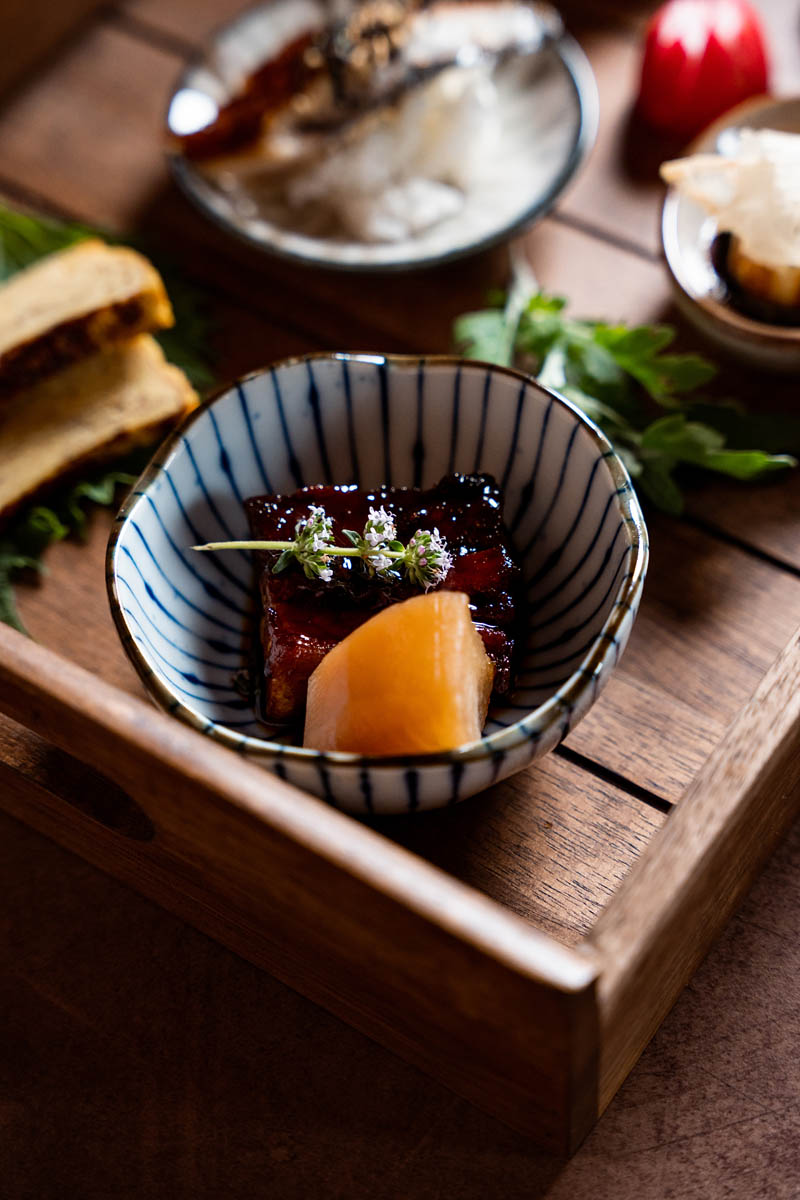
The journey continues with red mullet nigiri with oroshisioga, a ginger and scallion cream, followed by those of alfonsino fish, squid, amberjack, scallop, and the inevitable tuna belly. The experience proceeds with Normandy blue prawn starring in the Temaki Aoi Ebi. The chef arranges rice, raw prawn, its tempura head, and yuzu kosho sauce on a sheet of nori seaweed. It's up to the diner to wrap the Temaki and eat it with their hands, as Dovbenko suggests because Omakase is all about entrusting yourself to the chef and following their guidance. Bite after bite, it's a succession of acidity, sweetness, citrusy notes, and spiciness.
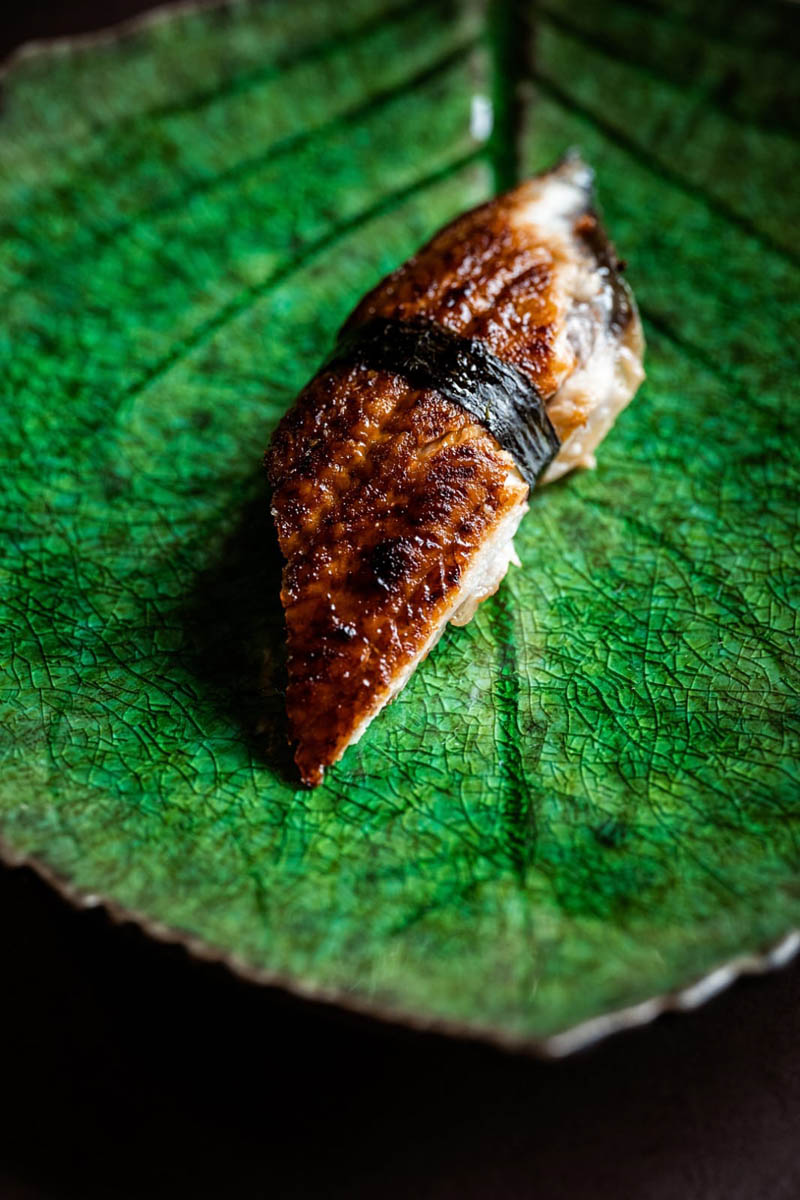
The small bowl serving the Ikura Don is a deep dive into the abyss, an explosion of the sea. In this typical Japanese dish, the rice is covered with ikura, the precious red-orange salmon roe, accompanied by sea urchin (but when it's not in season, like in this case, Vitaly uses goose barnacles, the world's most prized shellfish). The combination of the savory and unique texture of ikura with the bold, briny flavor of goose barnacle is a true delight.
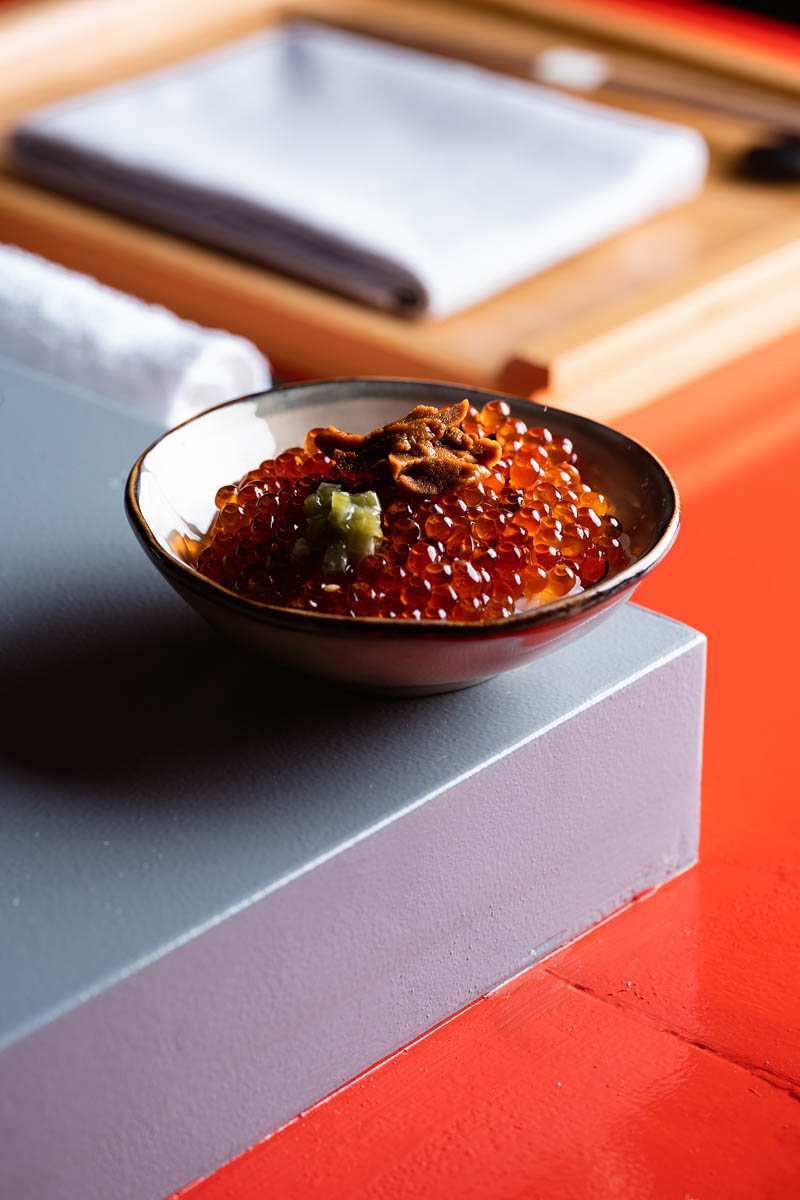
To conclude the journey, there's the warm indulgence of Asari no Miso-Shiro: a soybean miso soup with white seaweed, scallion, and clams. In its extreme elegance, this broth maintains a strong and robust character in which umami is expressed at the highest levels.
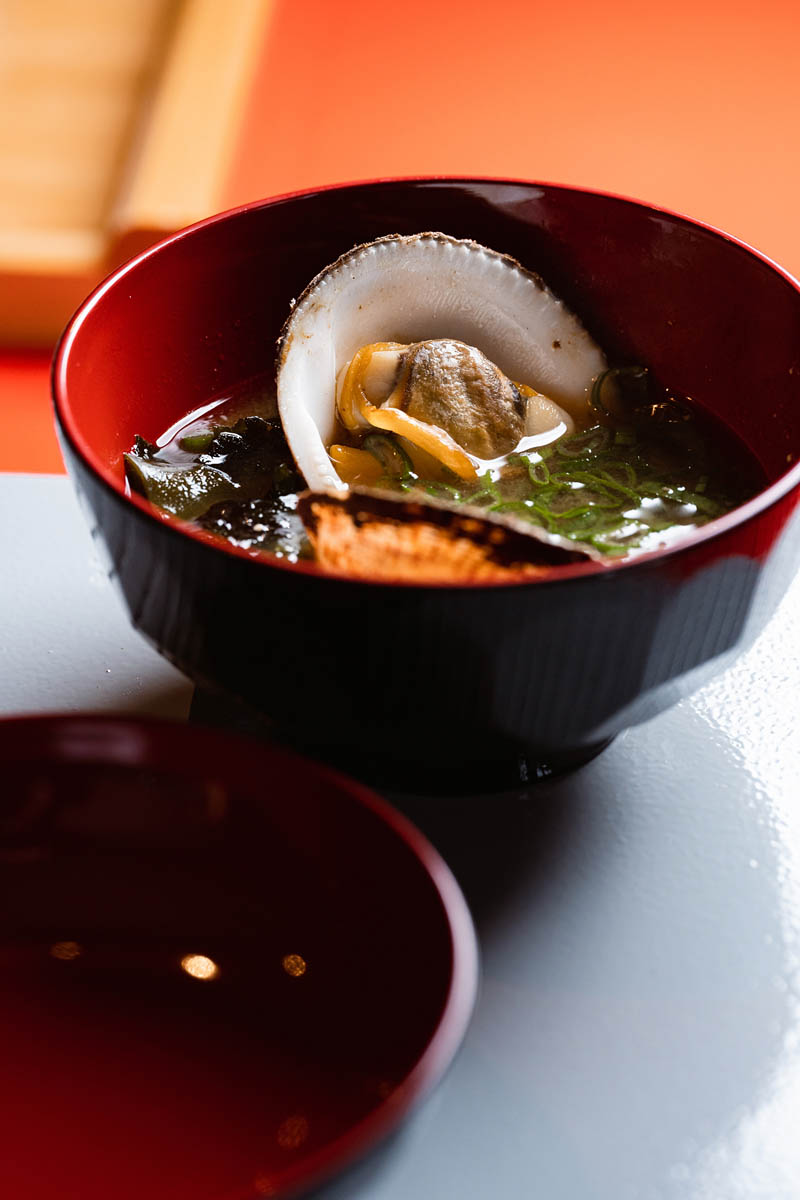
The only sweet course on the omakase menu is the Matcha keki, a delicate matcha tea cake that brings the tasting experience to a close. It's made with rice, walnuts, almonds, and hazelnuts. In Japan, before the second half of the 19th century (when sugar became accessible to everyone), the main ingredients for desserts were rice, beans, and flower nectar. At Siseroshi, it's not just the food that tells the story of the Land of the Rising Sun; every small detail and every single gesture do so, just like the origami that Luca and Vitaly have chosen to give to anyone who visits them. "Giving an origami has great importance: it means dedicating your Time to the recipient. Making an origami requires, indeed, time and creativity, in the spirit of meditation and slowness... Slowness. Care. Precision."

Address
Siseroshi
SP9, 114, 25020 Scarpizzolo BS
Tel: 030 799 9799
